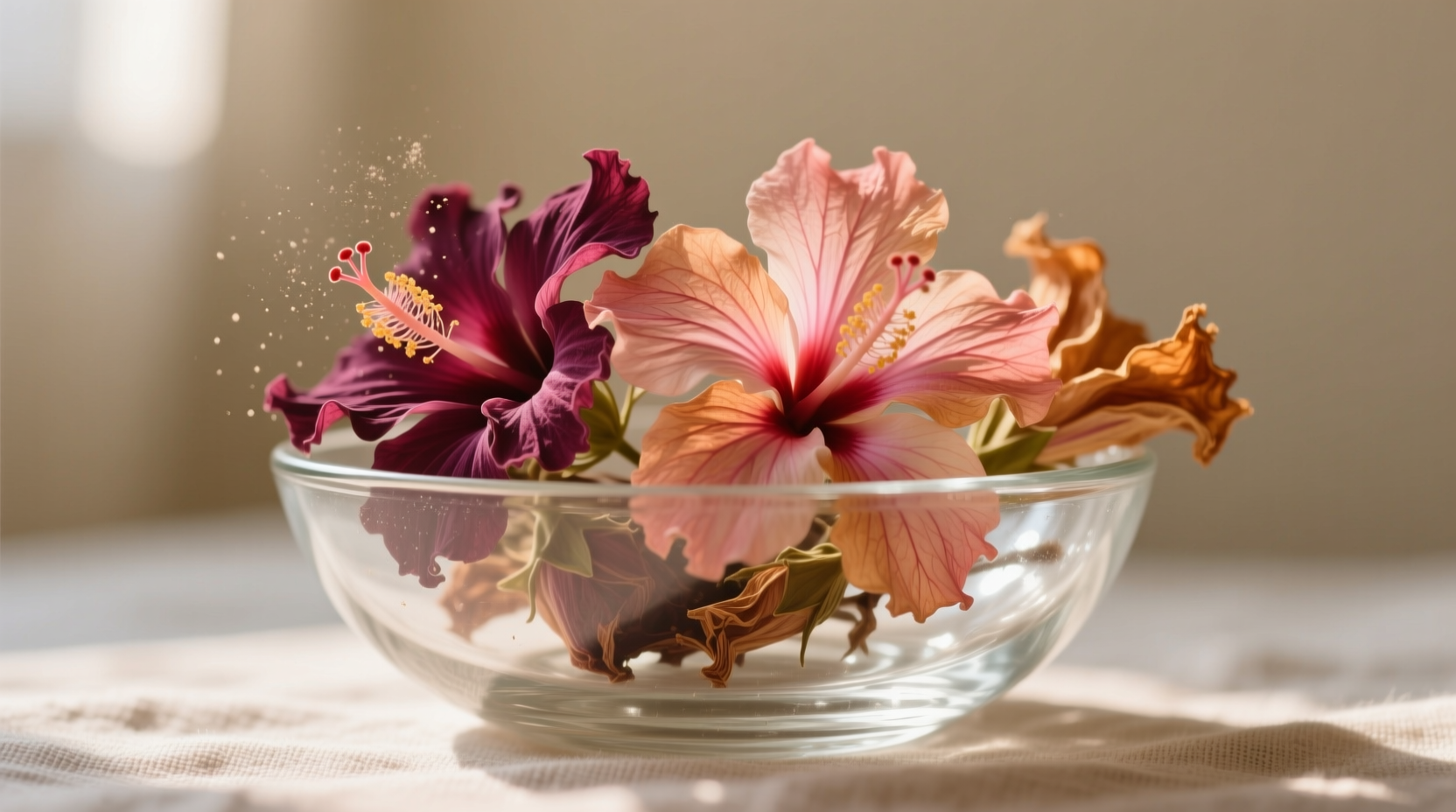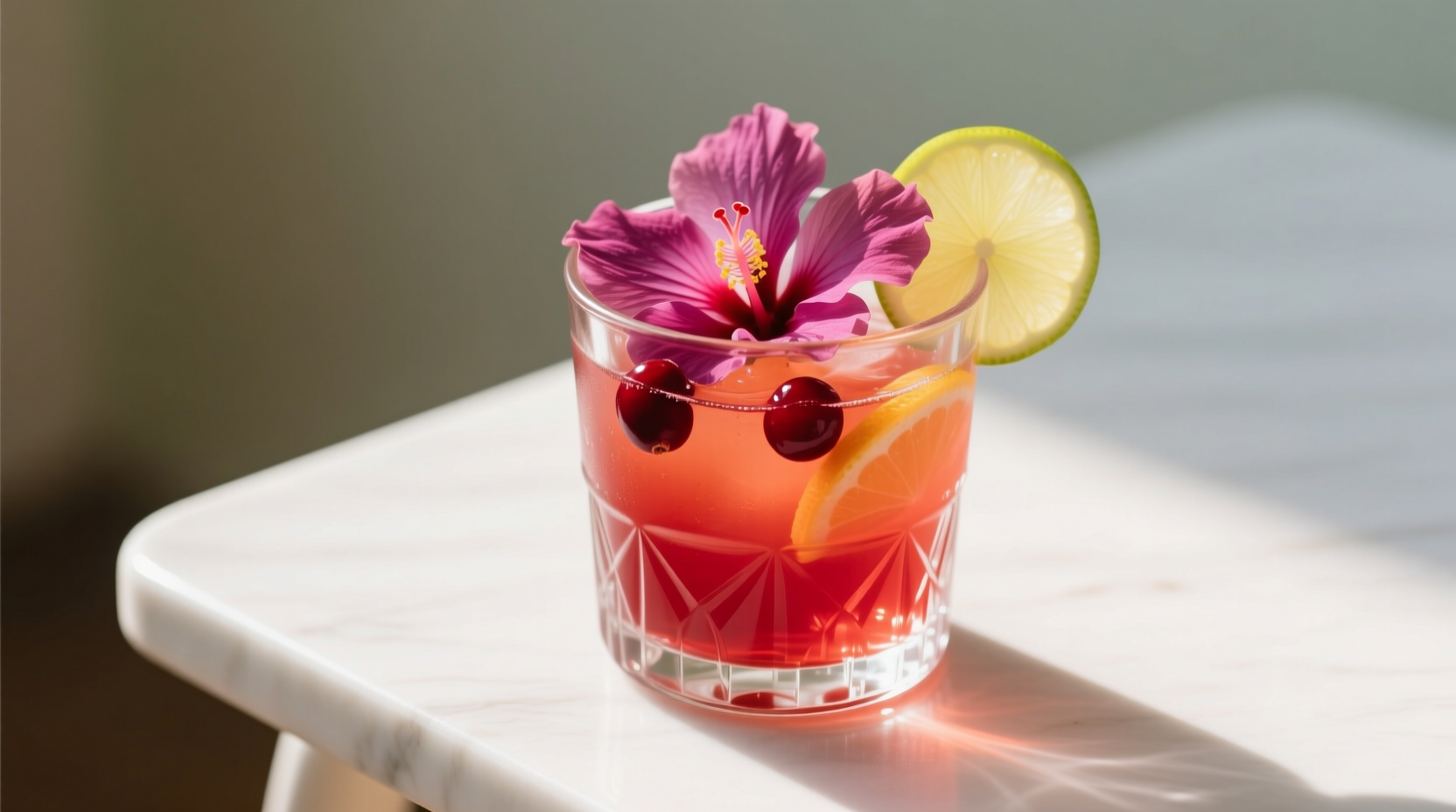The Sensory Experience of Hibiscus
When you sip a well-prepared hibiscus infusion, your palate immediately encounters a bright, refreshing tartness reminiscent of cranberries or sour cherries. This distinctive acidity comes from natural organic compounds including citric, malic, and tartaric acids present in the hibiscus calyces. Unlike artificial sour flavors, hibiscus delivers this tanginess with remarkable balance—never harsh or one-dimensional.
The flavor profile evolves as it lingers on your tongue, revealing subtle floral undertones and a gentle fruitiness similar to pomegranate or red currant. High-quality hibiscus often finishes with a clean, slightly astringent note that makes it incredibly refreshing, particularly when served chilled. This complex interplay of tart, floral, and fruity elements explains why hibiscus has become a staple in beverages across multiple culinary traditions.

How Preparation Affects Hibiscus Flavor
The way you prepare hibiscus dramatically influences its final taste profile. Understanding these variables helps you control the flavor outcome:
| Preparation Method | Flavor Characteristics | Best For |
|---|---|---|
| Hot water infusion (5-10 min) | Maximum tartness, pronounced cranberry notes, robust body | Traditional teas, cooking applications |
| Cold brew (8-12 hours) | Smooth, mellow acidity, enhanced floral notes | Iced beverages, delicate cocktails |
| Double extraction | Complex balance of tart and sweet notes, full-bodied | Concentrates, premium beverages |
| Short steep (2-3 min) | Milder tartness, brighter fruit notes | Beginners, children's beverages |
According to research from the Journal of Food Science, water temperature directly impacts the extraction of hibiscus's anthocyanins and organic acids. Higher temperatures increase tartness perception by up to 35% compared to cold brewing methods. This scientific insight explains why Mexican agua de jamaica often uses room-temperature water for a smoother profile, while Caribbean sorrel tea frequently employs boiling water for maximum intensity.
Hibiscus in Culinary Applications
The versatility of hibiscus extends far beyond beverages. When incorporated into cooking, its flavor profile transforms in fascinating ways:
- In sweet applications: Hibiscus complements sugar beautifully, creating complex flavor profiles similar to high-quality cranberry sauce but with more floral sophistication. When reduced into syrups or jams, it develops notes reminiscent of rhubarb-strawberry hybrids.
- In savory dishes: Chefs in West Africa use hibiscus to create tangy stews where its acidity cuts through rich meats. The tartness balances fatty ingredients much like tamarind or sumac in other culinary traditions.
- With spice pairings: Hibiscus harmonizes exceptionally well with ginger (adding warmth), mint (enhancing freshness), and cinnamon (adding depth). These combinations create layered flavor experiences that evolve with each sip or bite.
Food scientists at the University of California note that hibiscus's natural pectin content contributes to its mouthfeel, giving beverages a slightly viscous quality that enhances perceived richness without added sugars. This property makes it particularly valuable in crafting satisfying beverages with reduced sugar content.
Regional Variations in Hibiscus Flavor Perception
Hibiscus taste experiences vary significantly across cultures due to different preparation traditions and local adaptations:
In Mexico, where hibiscus (known as jamaica) is ubiquitous, the flavor is typically balanced with substantial sweetener, creating a profile that emphasizes the floral notes over tartness. Traditional Mexican preparation involves steeping dried hibiscus flowers in room-temperature water for several hours, resulting in a smoother, less acidic beverage compared to quick hot infusions.
Contrast this with Caribbean preparations, where hibiscus (called sorrel) is often boiled vigorously with spices like ginger and cloves, then heavily sweetened. This method extracts maximum tartness initially, which then balances with the added sugar and spices during fermentation.
West African preparations frequently incorporate hibiscus into complex spice blends where its tartness provides counterpoint to rich, fatty ingredients in stews and soups. Here, the flavor functions more as a seasoning element than a primary taste component.
Practical Tips for Enjoying Hibiscus Flavor
Whether you're new to hibiscus or looking to refine your experience, these evidence-based recommendations will help you maximize enjoyment:
- Start with quality ingredients: Choose deep burgundy-colored dried hibiscus calyces with a clean, slightly tangy aroma. Avoid any with musty smells or faded color.
- Control tartness through timing: For milder flavor, steep for 3-5 minutes in hot water. For maximum tartness, extend to 10-15 minutes. Remember that flavor continues developing even after removal from heat.
- Balance naturally: Instead of adding sugar immediately, try enhancing natural sweetness with a slice of ripe pear or apple during brewing. These fruits release natural pectins that soften perceived acidity.
- Experiment with temperature: Serve hot for pronounced tartness or chilled for a smoother, more floral experience. The same infusion can taste remarkably different based solely on serving temperature.
For those exploring hibiscus for the first time, a simple preparation method yields excellent results: Use 1-2 tablespoons of dried hibiscus per cup of water, steep for 5-7 minutes in hot (not boiling) water, then strain. Add a small amount of sweetener only if needed after tasting. This approach preserves the delicate flavor balance that makes hibiscus so special.
Understanding Hibiscus Flavor Science
The distinctive taste of hibiscus comes from its unique chemical composition. According to USDA phytochemical analyses, hibiscus sabdariffa contains:
- High concentrations of organic acids (citric, malic, tartaric) responsible for tartness
- Anthocyanins that provide both color and subtle flavor notes
- Natural pectins contributing to mouthfeel
- Volatile compounds creating floral and fruity aroma notes
These components work synergistically to create hibiscus's signature flavor profile. The tartness registers first on your palate, followed by the floral notes, with the fruitiness emerging as the flavor develops. This sequential flavor release makes hibiscus particularly interesting to the palate, as the taste experience evolves with each sip.
Common Flavor Misconceptions
Several misconceptions about hibiscus flavor persist in popular discourse:
Misconception: "Hibiscus is just like cranberry."
Reality: While both share tart characteristics, hibiscus has more pronounced floral notes and a cleaner finish without cranberry's earthy undertones. Food scientists at Cornell University found that hibiscus activates different taste receptors, creating a distinct sensory experience.
Misconception: "All hibiscus tastes extremely sour."
Reality: Properly prepared hibiscus achieves a balanced tartness that's refreshing rather than overwhelming. The perceived sourness depends heavily on preparation method and water-to-flower ratio.
Misconception: "Hibiscus flavor is one-dimensional."
Reality: High-quality hibiscus reveals multiple flavor layers as it cools, with initial tartness giving way to complex floral and fruit notes. This evolution makes it particularly interesting for sensory exploration.
Conclusion: Embracing Hibiscus's Unique Flavor Profile
Hibiscus offers a distinctive taste experience that combines refreshing tartness with subtle floral complexity—a flavor profile unmatched by other botanicals. Whether enjoyed as a simple tea, incorporated into sophisticated cocktails, or used to add dimension to culinary creations, understanding its flavor characteristics allows you to maximize enjoyment. By controlling preparation variables and appreciating its regional variations, you can tailor hibiscus to your personal taste preferences while experiencing one of nature's most vibrant flavor offerings.











 浙公网安备
33010002000092号
浙公网安备
33010002000092号 浙B2-20120091-4
浙B2-20120091-4